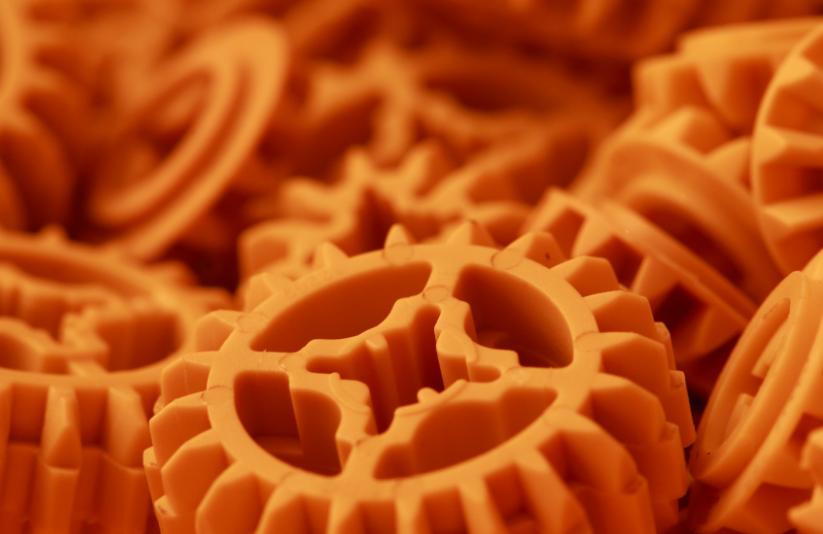High-performance plastics offer superior performance and physical properties that make them more suitable for some applications than standard options. ISO criteria for high-performance plastics include thermal stability typically exceeding 150 °C, chemical stability protecting materials from almost all chemicals, creep resistance, and other mechanical properties. Dielectric strength or other electrical properties are also criteria.
In many industries, using high-performance polymers can save weight and improve friction and chemical resistance, especially in high operating temperatures environments. Some of these materials incorporate glass beads, glass fibers, or carbon fibers to enhance rigidity and heat resistance. Graphite and PTFE additives are also used to lower friction for better sliding in skidding and other applications.
National Plastics & Seals, Inc. fabricates, machines, and extrudes a variety of high-performance plastics and also carries many stock seals, tubing, and other options. This guide to high-performance plastics looks at the different benefits of high-performance plastics, and their applications.
Benefits
There are many reasons to specify one of the many high-performance plastic materials we work with, such as:
High Temperature Resistance
As heat-resistant plastic materials continue to evolve for new and more challenging applications. Many high-performance polymers can resist damage or deformation in permanent operating temperatures between 302 °F to 572 °F; however, the specific maximum temperature will depend on the environment.
In fact, the heat resistance of high-performance plastics makes them among the best alternatives to metal materials. Plastics are lightweight, have excellent friction characteristics for sliding and non-stick uses, and withstand chemical exposure. Modified and unmodified versions are available.
Lightweight
These plastics are less dense than ceramics and metals, which means they add less weight to an assembly or finished product. This can subsequently cut down on fuel use in aircraft and other vehicles. For example, polyether ether ketone (PEEK) can replace steel and aluminum in some aerospace equipment, which could lead to a 70% reduction in weight.
Durability
Another advantage of high-performance plastics is increased overall durability, as they resist fatigue, wear, stress cracking, and creep more effectively than standard plastics. This translates to reduced maintenance needs and a longer service life for many components. Polyphenylene sulfide (PPS) is one material that can replace bronze and brass for water valves, potentially multiplying their lifespan by as much as 10 times.
Thermal Stability
High-performance polymers can be developed with higher glass transition temperatures and melting points than traditional polymers. This makes them suitable for use in extreme temperatures without compromising their structural integrity. One type of plastic that offers superior thermal stability is polyimide (PI), which will not burn or melt at temperatures up to 400 °C.
Chemical Resistance
Many high-performance plastics offer significantly better resistance to bases, acids, oils, solvents, and gases than standard alternatives. These can be used in a variety of applications that require corrosion resistance, frequent sanitization, and outdoor exposure.
Electrical Insulation
Materials with very low electrical conductivity and a dielectric constant help protect against electromagnetic interference and electrical shock more effectively than either ceramics or metals. This is useful in electrical equipment, electronics, appliances, and industrial machinery.
Optical Clarity
Some high-performance plastics are formulated to have a higher refractive index and transparency. This improves their ability to transmit light and provide clear visibility. Polyethersulfone (PES) is a popular option for screens and digital displays because of its enhanced color fidelity and optical clarity.
Applications
With all of their specialized benefits, high-performance plastics are used extensively in industrial, consumer, medical, and other applications, such as:
- Applications requiring a low friction coefficient, increased wear resistance, or improved abrasion resistance, with compounds like PTFE and graphite.
- Heat and shock-resistant components in aerospace and glass materials.
- Conductive materials requiring high heat resistance, insulation, definition, or emission proofing for electrical or semiconductor applications.
- Components that resist radiation and emissions from X-ray, vacuum, and nuclear technology.
- Medical device parts that undergo hydrolysis proofing or sterilization processes.
- Chemical storage and related equipment or components.
Learn More About Our High-performance Plastics
National Plastics & Seals is a leader in fabrication and machining plastic parts and other products for use in the healthcare, food and beverage, defense, electronics, automotive, aerospace, manufacturing, and other industries. Since 1985 we have served customers with stock and custom high-performance plastics and a commitment to excellent customer service and competitive prices.
Contact us today to explore our range of high-performance materials and capabilities, or request a quote for your next project.

